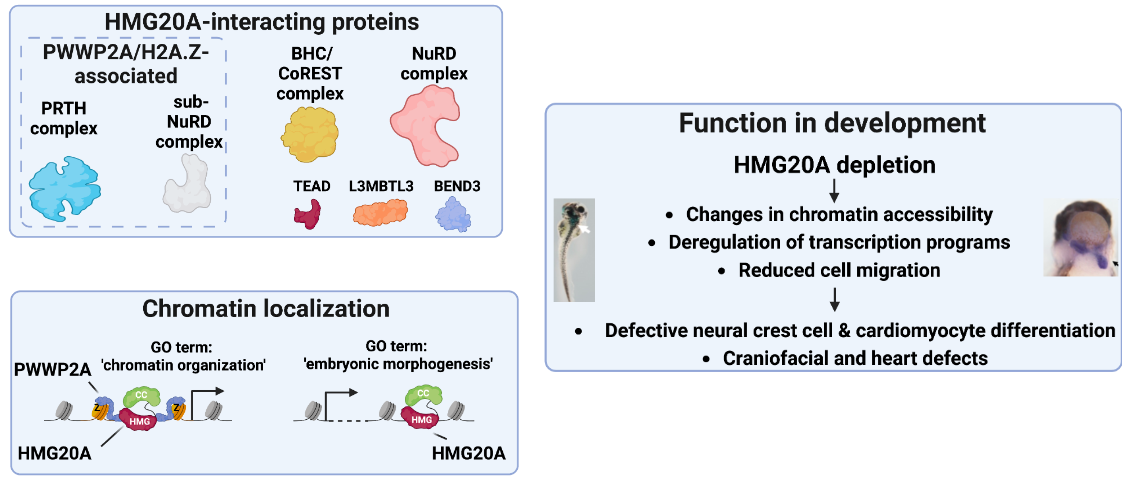February 2023
nature communications
The H2A.Z and NuRD associated protein HMG20A controls early head and heart developmental transcription programs
Andreas Herchenröther, Stefanie Gossen, Tobias Friedrich, Alexander Reim, Nadine Daus, Felix Diegmüller, Jörg Leers, Hakimeh Moghaddas Sani, Sarah Gerstner, Leah Schwarz, Inga Stellmacher, Laura Victoria Szymkowiak, Andrea Nist, Thorsten Stiewe, Tilman Borggrefe, Matthias Mann, Joel P. Mackay, Marek Bartkuhn, Annette Borchers, Jie Lan & Sandra B. Hake

Precise regulation of chromatin plasticity during development is of critical importance. This study identifies the H2A.Z- and PWWP2A-associated protein HMG20A as part of several chromatin-modifying complexes, including NuRD, and shows that it localizes to distinct genomic regulatory regions. Its ablation causes severe head, craniofacial, and heart developmental defects in Xenopus laevis, caused by defects in neural crest cell (NCC) migration and cartilage formation. These effects are reproduced in Hmg20a-depleted mESCs, that exhibit inefficient differentiation to NCCs and cardiomyocytes (CM). Loss of HMG20A, which marks open promoters and enhancers, results in chromatin accessibility changes and a striking deregulation of transcription programs involved in epithelial-mesenchymal transition (EMT) and differentiation processes. Our findings reveal that HMG20A is part of H2A.Z-/PWWP2A-/NuRD-complexes and a key modulator of developmental transcription programs that guide the differentiation of NCCs and CMs.